Instrumentation
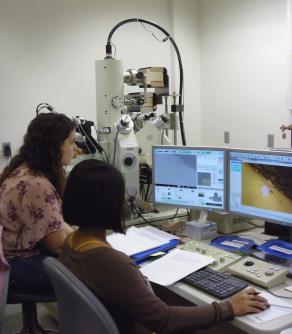 The JEOL was delivered in March 2013, it is the workhorse of the lab.
The JEOL was delivered in March 2013, it is the workhorse of the lab.
It would make a fabulous SEM because of its field emission electron source, but of course has rather limited stage movement because of its main mission which is x-ray analysis. To that end, it has five WDS spectrometers, all with large area crystals. It also has a Thermo Noran System 7 SDD-EDS system. Control is through JEOL, Probe for EPMA, or Thermo-NSS software depending on the need. Finally, it has a cathodoluminescence (CL) detector which can accommodate a variety of filters for specific wavelength detection.
Acquisition of the instrument was supported by the National Science Foundation under Grant Number 1126898. Any opinions, findings, and conclusions or recommendations expressed in this material are those of the author(s) and do not necessarily reflect the views of the National Science Foundation. Contact Ken Severin for details.
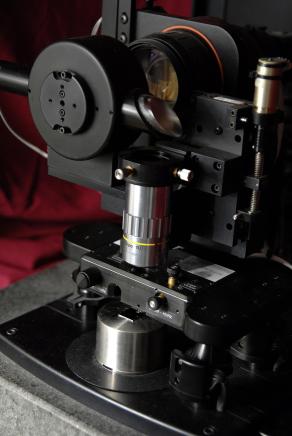 Our Pacific Nanotechnology Nano-R AFM can be used for the analysis of surfaces at
the angstrom scale. Contact Ken Severin for details.
Our Pacific Nanotechnology Nano-R AFM can be used for the analysis of surfaces at
the angstrom scale. Contact Ken Severin for details.
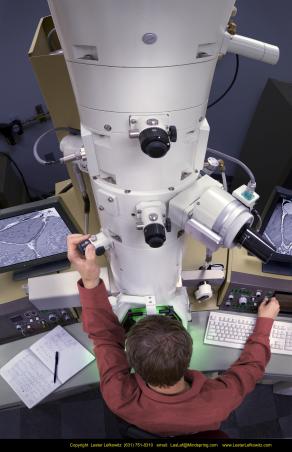 Our JEOL 1200 Transmission Electron Microscope can be used for detailed examination
of thin biological and materials science samples. Contact Ken Severin for details.
Our JEOL 1200 Transmission Electron Microscope can be used for detailed examination
of thin biological and materials science samples. Contact Ken Severin for details.
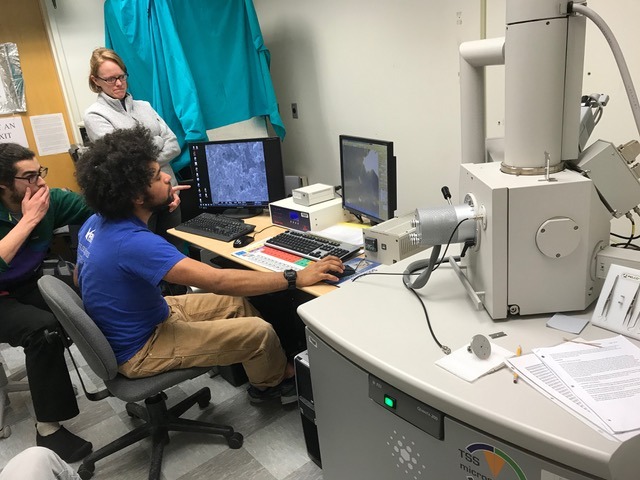 The FEI Quanta200 can be operated in regular high-vacuum, low-vacuum and full environmental
ESEM modes for imaging many varieties of samples. Low-vacuum mode allows samples to
be imaged that are uncoated. ESEM mode can image wet, uncoated samples and samples
can be heated or cooled with a Peltier stage. The Quanta200 is equipped with iXRF
software/hardware and an e2v SSD EDS detector which can measure >300,000 x-ray counts/second.
Contact Ken Severin for details.
The FEI Quanta200 can be operated in regular high-vacuum, low-vacuum and full environmental
ESEM modes for imaging many varieties of samples. Low-vacuum mode allows samples to
be imaged that are uncoated. ESEM mode can image wet, uncoated samples and samples
can be heated or cooled with a Peltier stage. The Quanta200 is equipped with iXRF
software/hardware and an e2v SSD EDS detector which can measure >300,000 x-ray counts/second.
Contact Ken Severin for details.
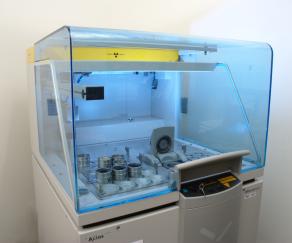 Our PanAlytical Axios four kilowatt wavelength dispersive XRF is used for quantitative
analysis of bulk samples (approximately 10 grams) to the ppm level. Contact Ken Severin for details.
Our PanAlytical Axios four kilowatt wavelength dispersive XRF is used for quantitative
analysis of bulk samples (approximately 10 grams) to the ppm level. Contact Ken Severin for details.
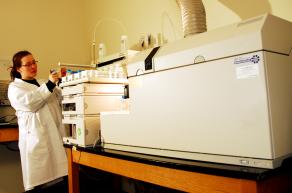 Our Agilent 7500ce ICPMS can do elemental analysis of liquids on the parts per trillion
scale. Introduction systems include an Agilent 1100 liquid chromatography (LC) system
for speciation studies and a New Wave UP213 laser ablation (LA) system for the analysis
of solids. Our PostNova AF2000 Field Flow Fractionation (FFF) instrument may also
be coupled to the ICP-MS to examine size fractions and metals.
Our Agilent 7500ce ICPMS can do elemental analysis of liquids on the parts per trillion
scale. Introduction systems include an Agilent 1100 liquid chromatography (LC) system
for speciation studies and a New Wave UP213 laser ablation (LA) system for the analysis
of solids. Our PostNova AF2000 Field Flow Fractionation (FFF) instrument may also
be coupled to the ICP-MS to examine size fractions and metals.
 Asymmetric FFF is a mechanical separation technique used to separate particles by
their hydrodynamic size in the 1nm to 10 micron range. The PostNova AF2000 can be
run as a standalone instrument or it can be coupled to the ICP-MS to examine the relationship
between size fractions and metals. The technique by itself is versatile, in addition
to colloids, Asymmetric FFF can be used to characterize and separate proteins, synthetic
nanoparticles, pharmaceuticals, antibodies, biomolecules, vaccines and the like. Size
fractions can be collected and further analyzed with other analytical techniques such
as SEM, TEM, AFM and/or NMR.
Asymmetric FFF is a mechanical separation technique used to separate particles by
their hydrodynamic size in the 1nm to 10 micron range. The PostNova AF2000 can be
run as a standalone instrument or it can be coupled to the ICP-MS to examine the relationship
between size fractions and metals. The technique by itself is versatile, in addition
to colloids, Asymmetric FFF can be used to characterize and separate proteins, synthetic
nanoparticles, pharmaceuticals, antibodies, biomolecules, vaccines and the like. Size
fractions can be collected and further analyzed with other analytical techniques such
as SEM, TEM, AFM and/or NMR.
 Our PANalytical X'Pert MRD Material Research Diffractometer (MRD) x-ray diffractometer
has many options and can be used for conventional and high resolution/quantitative
powder x-ray diffraction, surface and thin film diffraction, and texture analysis.
Contact Tom Trainor for details.
Our PANalytical X'Pert MRD Material Research Diffractometer (MRD) x-ray diffractometer
has many options and can be used for conventional and high resolution/quantitative
powder x-ray diffraction, surface and thin film diffraction, and texture analysis.
Contact Tom Trainor for details.
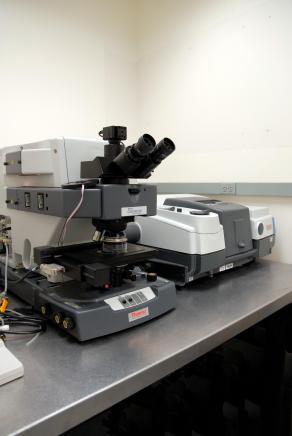 FTIR Thermo Scientific Nicolet 6700 with attached continuum microscope. Capable of
high-resolution infrared spectra of volatile species in volcanic glasses, snow/ice
impurities and aerosols. Measures the attenuated total reflectance of sample surfaces.
Contact Jess Larsen for details.
FTIR Thermo Scientific Nicolet 6700 with attached continuum microscope. Capable of
high-resolution infrared spectra of volatile species in volcanic glasses, snow/ice
impurities and aerosols. Measures the attenuated total reflectance of sample surfaces.
Contact Jess Larsen for details.


